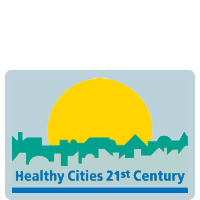If planners are to help create healthy communities they need to work with the range of other professionals and practitioners that also have a role. There are a number of benefits that can come from a commitment to practise collaborative working. These include:
- Helping to meet corporate objectives and aspirations
- Sharing and potential pooling of capacity and resources
- Sharing an evidence base
- Engaging communities in a coordinated way
- Developing a shared understanding of the challenges and potential solutions
- Assessing the health impact of proposed policies, strategies and development
- Aligning strategies to avoid duplication and unintended consequences
- Working more effectively with elected members.
Previous work by the TCPA has found that one of the most effective ways of helping to facilitate better joint working is to appoint someone to do it. These specialist postholders report that their role has been vital to:
- help public health staff to understand and engage effectively with the planning process and other council regulatory functions
- increase planners’ understanding of health inequalities
- break down language and jargon barriers across both professions.
Public health and planning collaborating for better health
In 2010 Knowsley Council, in north west England, created a Health and Regeneration Project Officer post with the Department of Regeneration, Economy and Skills. The purpose of the post is to promote health in all aspects of planning and regeneration.
Successes include:
- embedding health principles into local planning documents and major regeneration projects by doing a health impact assessment (HIA) – this has strengthened the council’s focus on promoting physical activity, protecting green space, providing areas for food production and responding to the health impacts of climate change – for example, by increasing the amount of shaded areas
- getting large groups of officers and residents together to understand the likely health impact of developments, to discuss the pros and cons, and to consider any other issues that had not been talked about previously – leading to better quality developments.
The postholder, Cath Taylor, says:
‘Since I started in 2010 I’ve sat with planning policy/strategy, regeneration, housing and environmental health. This has really helped to make contacts, to identify opportunities for joint-working and to make sure that people understand the links between their work and the public’s health.’
Contact: Cath Taylor, Principal Health Promoting Environments Officer, Knowsley Council, catherine.taylor@knowsley.gov.uk


